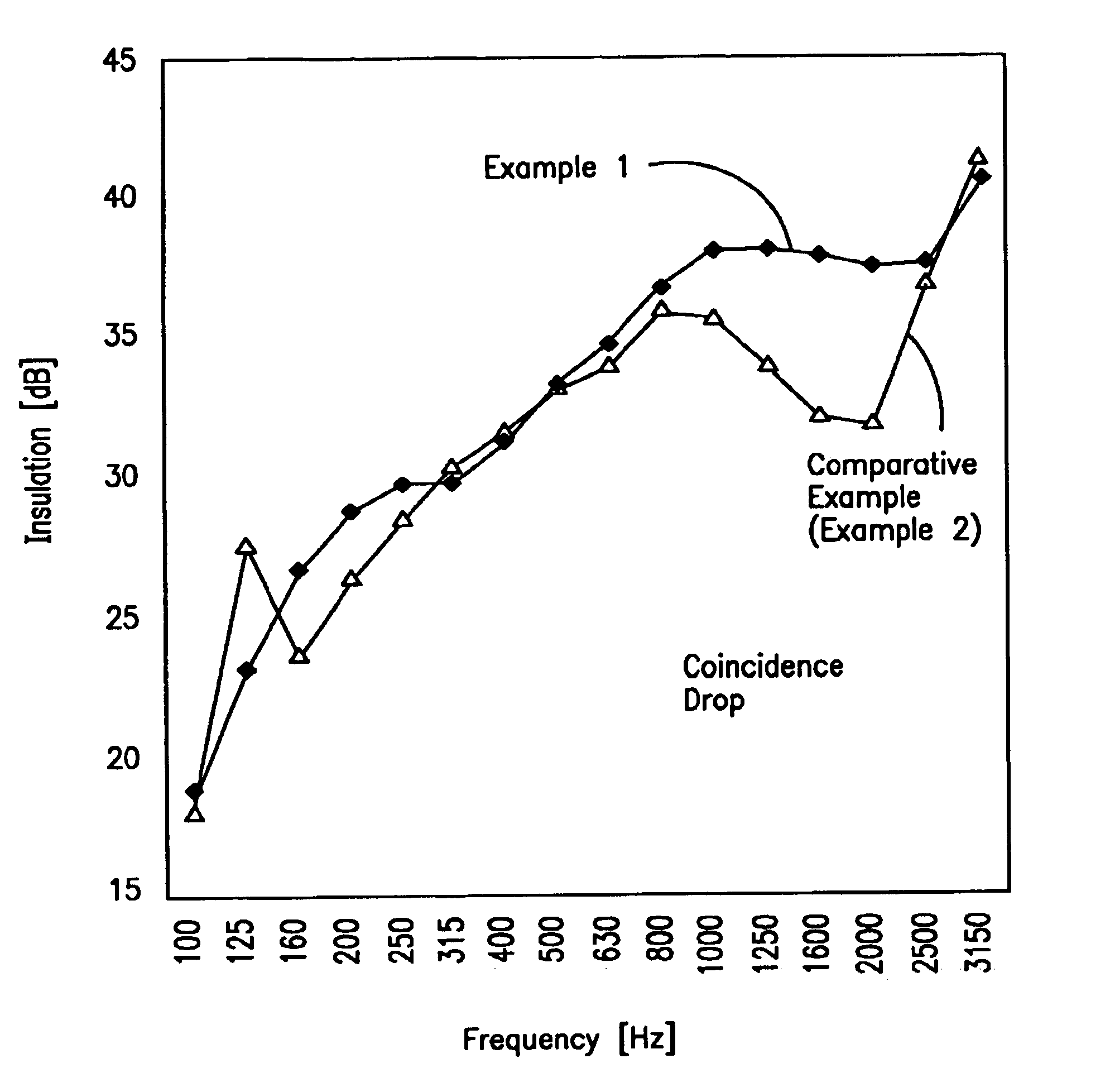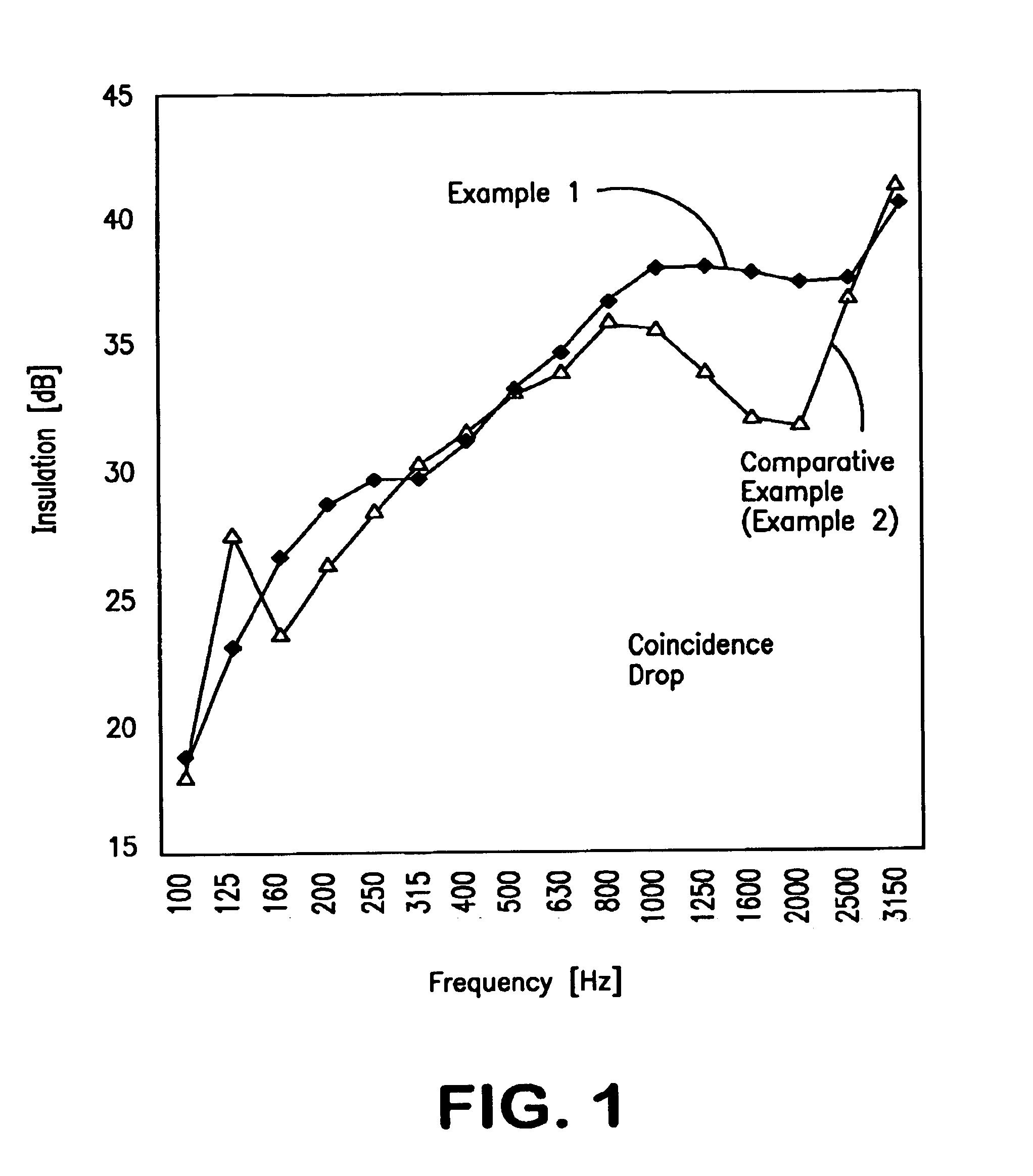Compound safety glass and PVB foil for the production thereof
a technology of safety glass and pvb foil, which is applied in the field of laminated safety glass, can solve the problems of increased tack and limited capability of film further processing using conventional systems
- Summary
- Abstract
- Description
- Claims
- Application Information
AI Technical Summary
Benefits of technology
Problems solved by technology
Method used
Image
Examples
example 1
[0066]22 parts by weight of triethylene glycol bis-n-heptanoate (3G7) as standard plasticizer, together with 11 parts by weight of Pluriol® 600, an unsubstituted poly(ethylene glycol) with an average molar mass of 600 [g / mol] or an average degree of polymerization DP of 13.6, and also 0.15 part by weight of Tinuvin® P UV absorber (manufacturer: Ciba) were added to 67 parts by weight of a polyvinyl butyral resin with a vinyl alcohol radical content (OH group content calculated as vinyl alcohol content) of 20.5% by weight and a vinyl acetate radical content of 0.7% by weight. The mixture was extruded at a melt temperature of about 200° C. in a twin-screw extruder with a flat-film die to give a transparent film of thickness 0.76 mm.
[0067]The PVB film and each of two panes of glass of dimensions 1480×1230×4 mm then underwent a lamination process, by simultaneous heating and compression in an autoclave, to give panes of laminated glass. The sound insulation value Rw of these panes was de...
examples 3 to 7
[0070]The examples 3 to 7 given in the table below were carried out as for example 1. The sound insulation curves for these examples 3 to 7 were at a level similar to the curve according to example 1.
[0071]
Example / 2constituent1(comparative)34567Polyvinyl67746767676767butyralDHA(1)———22—22223G7(2)222622—16.5—Pluriol ®11——11——600(3)Marlo-——11—16.5—phen ®NP 12(4)Marlo-—————11phen ®NP 6(5)Poly-THF11650(6)UV absorber0.150.150.150.150.150.150.15PropertyFilm thick-0.760.760.760.760.760.760.76ness [mm]Haze ΔL−0.320.010.26−0.16Rw(7)37.035.436.437.336.136.236.9(1)Di-n-hexyl adipate (2)Triethylene glycol bis-n-heptanoate (3)Poly(ethylene glycol) with an average molecular weight of 600 [g / mol](4)Monolaterally substituted PEG with a polyethylene glycol fraction with a DP of 12 and an isononylphenol fraction on one of the two hydroxyl-terminated ends. (5)Bilaterally substituted PEG with a polyethylene glycol fraction with a DP of 6 and an isononylphenol fraction on one of the two hydroxyl-termina...
PUM
| Property | Measurement | Unit |
|---|---|---|
| frequency | aaaaa | aaaaa |
| thickness | aaaaa | aaaaa |
| frequency | aaaaa | aaaaa |
Abstract
Description
Claims
Application Information
 Login to View More
Login to View More - R&D
- Intellectual Property
- Life Sciences
- Materials
- Tech Scout
- Unparalleled Data Quality
- Higher Quality Content
- 60% Fewer Hallucinations
Browse by: Latest US Patents, China's latest patents, Technical Efficacy Thesaurus, Application Domain, Technology Topic, Popular Technical Reports.
© 2025 PatSnap. All rights reserved.Legal|Privacy policy|Modern Slavery Act Transparency Statement|Sitemap|About US| Contact US: help@patsnap.com


